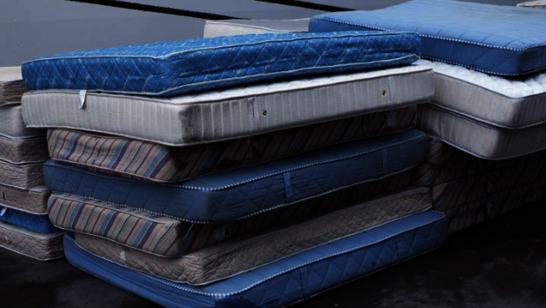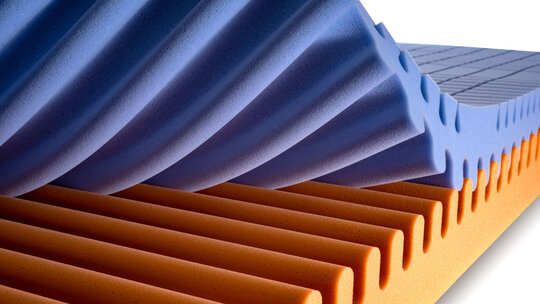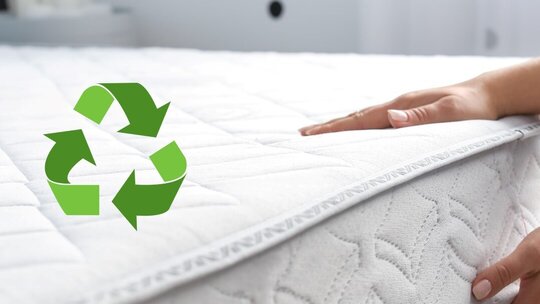Roughly 40 million mattresses reach the end of their lifetimes every year in the EU alone. If you stacked them all up, the resulting pile would be 904 times the height of Mount Everest. Such a gigantic mountain calls for sustainable solutions. End-of-life Mattresses consist of valuable raw materials, around 10 to 15 kilograms of which are made of foam. And that foam is what we want to put back into the product cycle. That's our mission!
SHARING IDEAS.
SHAPING THE FUTURE.
Circularity and breaking the link between growth and the consumption of resources call for creative thinking and collaboration throughout the entire value chain. We're absolutely certain of that. That’s why we are working with different partners at different levels. Together we are strong. For a world with a future.
EOL-mattresses are valuable too

Mattresses reach the end of their lifetimes after around ten years. But they are far from worthless, since they contain valuable raw materials – from the metals in spring mattresses through to textiles and plastics – that should be sent for recycling. The treatment and reuse of polyurethane (PU) foams are especially important in this process. These foams are the main component of foam mattresses, and spring mattresses also contain a large amount of PU foam.
Polyurethane foam can be recycled both mechanically and chemically. In chemical recycling, the polyurethane foams are broken down into their original basic constituents. One key raw material that is reclaimed in this process is recycled polyol (known as re-polyol), which can be used to make new mattress out of old. In mechanical processing, the polyurethane waste is processed to create, for example, composite foam.
Advantages of mattress recycling
![[Translate to Englisch:] [Translate to Englisch:]](/fileadmin/_processed_/b/8/csm_Matratzenrecycling_569bc21bdf.jpg)
- Materials that have reached the end of their life cycles in their original form can be reused as raw or auxiliary materials for other products.
- Reclaimed raw materials can be used in the production of new mattresses (circular economy).
- Recycled raw materials have a much lower carbon footprint than fossil primary raw materials.
- Recycling and the circular economy in particular help to reduce waste disposal costs.
- The ongoing refinement and enhancement of the chemical recycling process is aimed at producing new mattresses with the same high quality as mattresses made from conventional materials.
![[Translate to Englisch:] [Translate to Englisch:]](/fileadmin/_processed_/5/c/csm_NEVEON_Sustainability_Illustration_FB-Format_RZ5_1988x1328_2_41e7198dd6.jpg)


